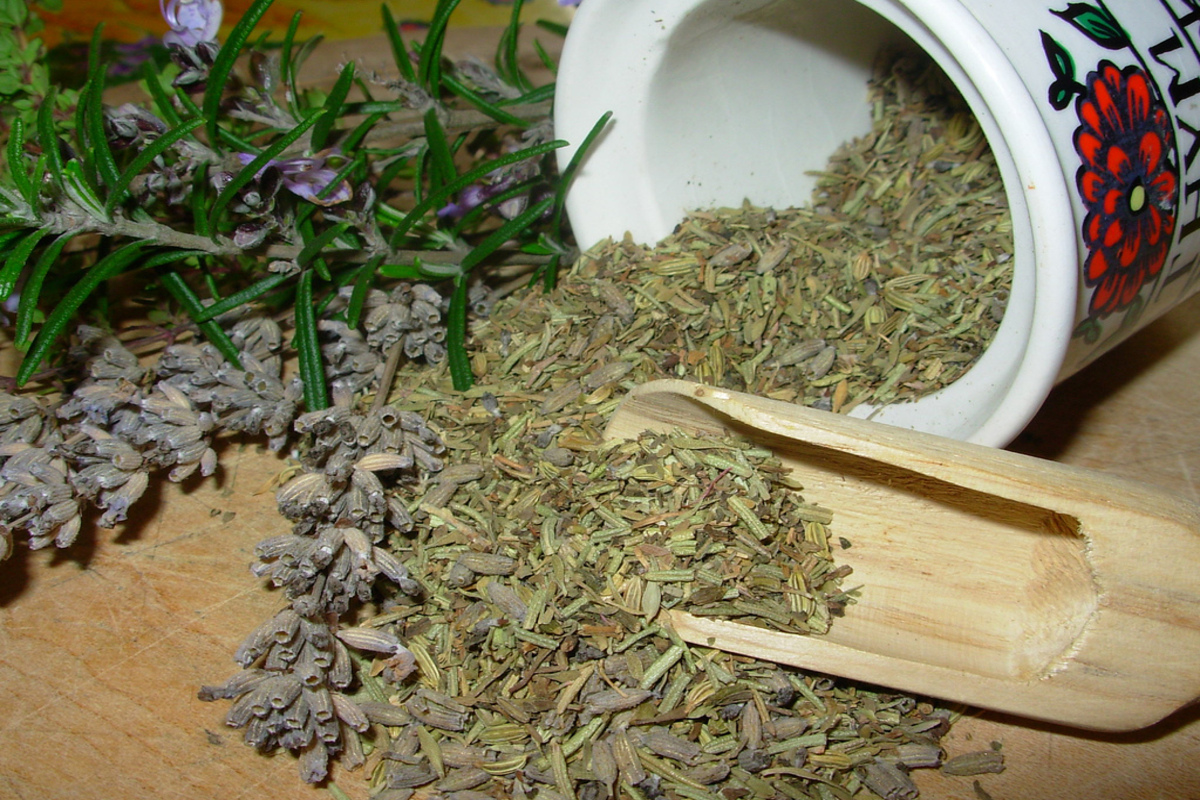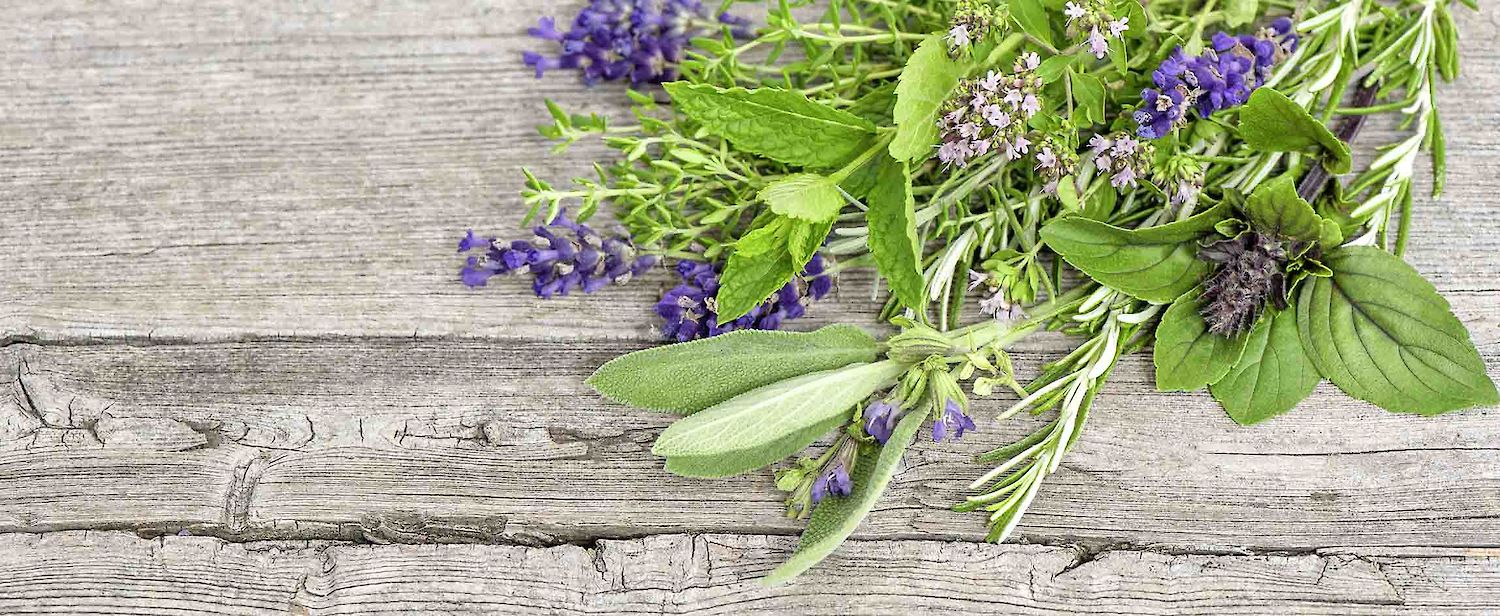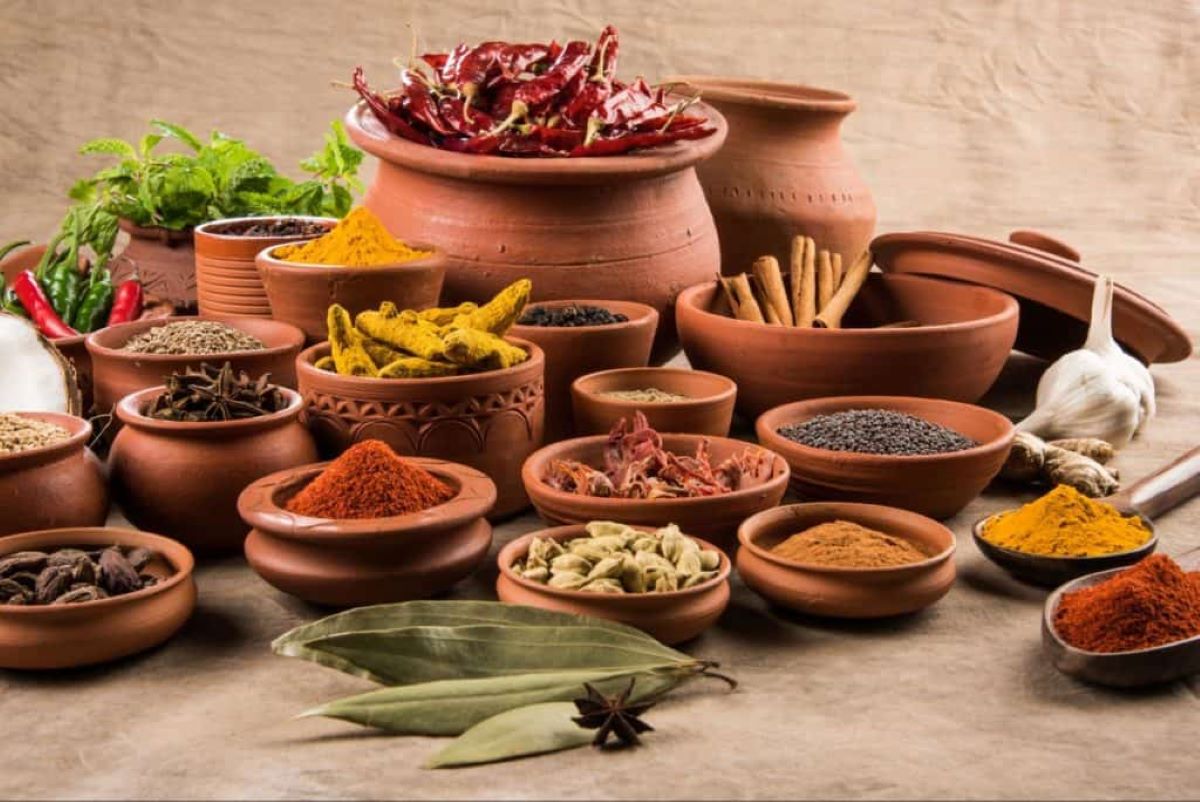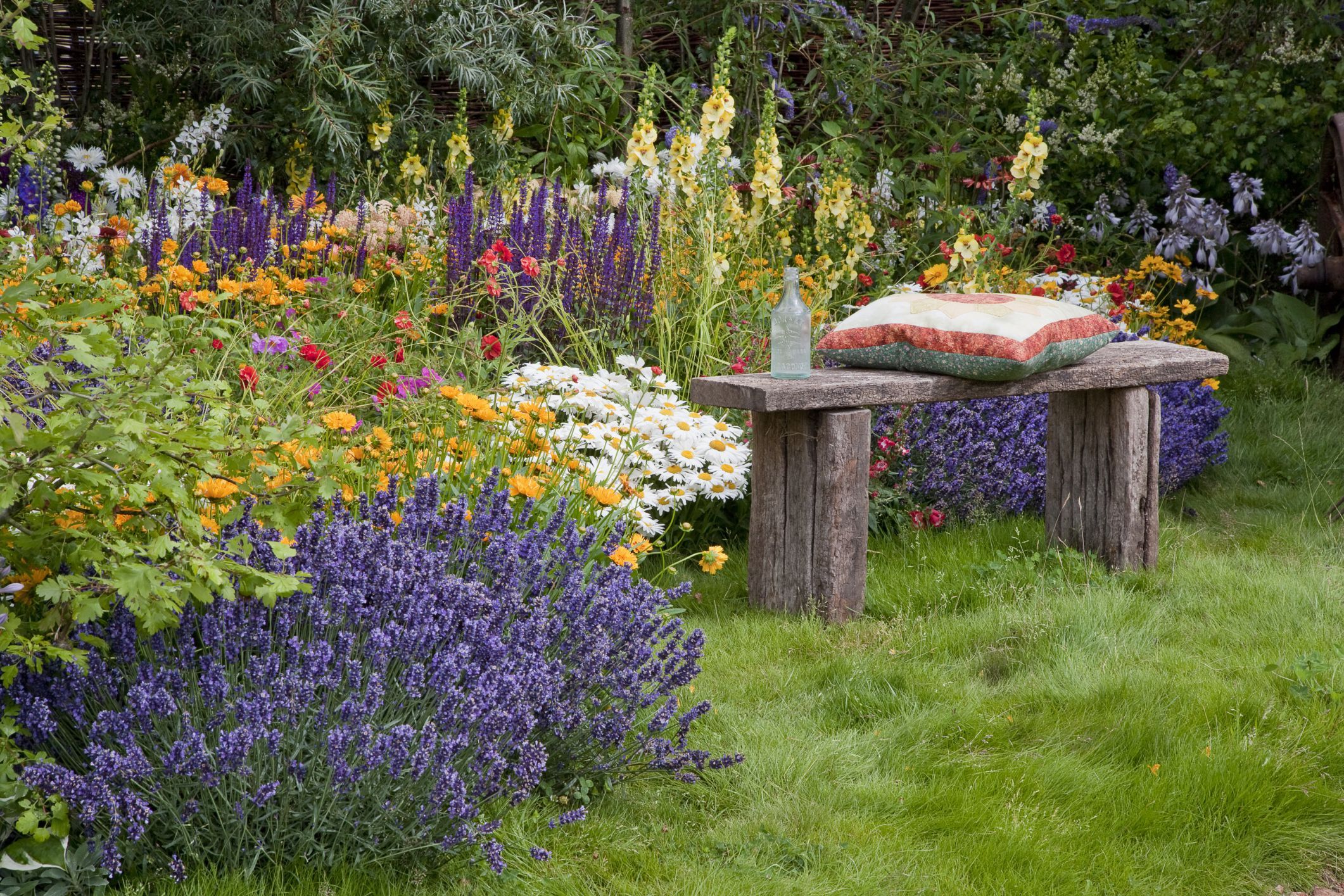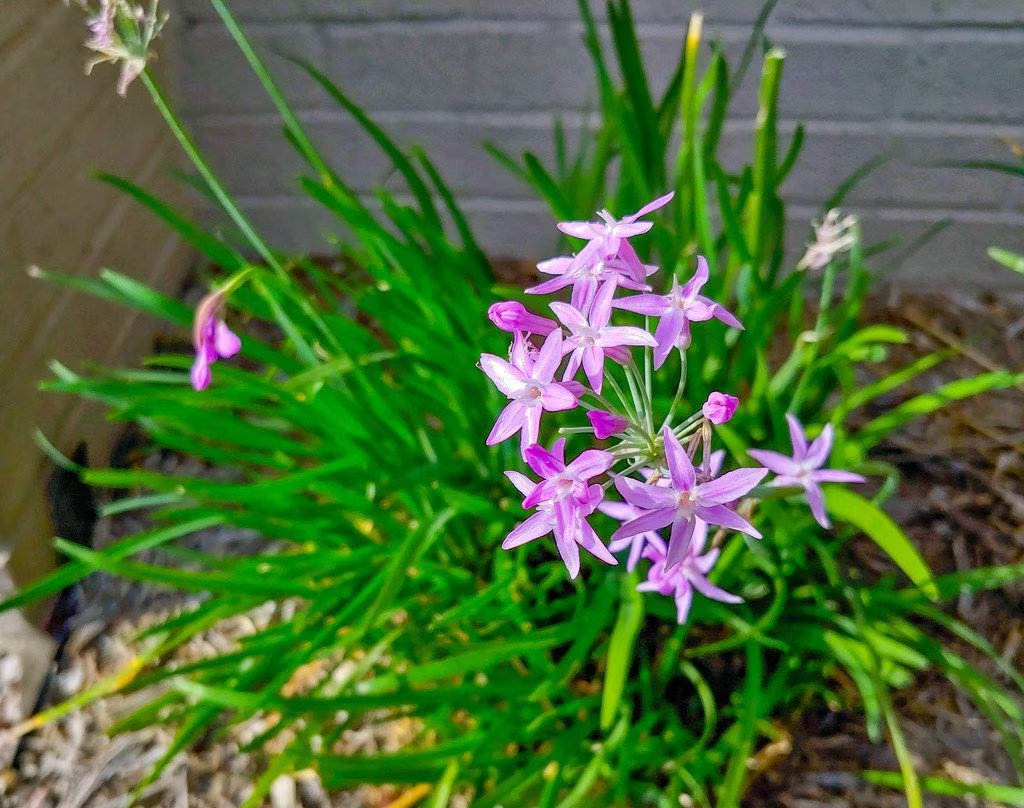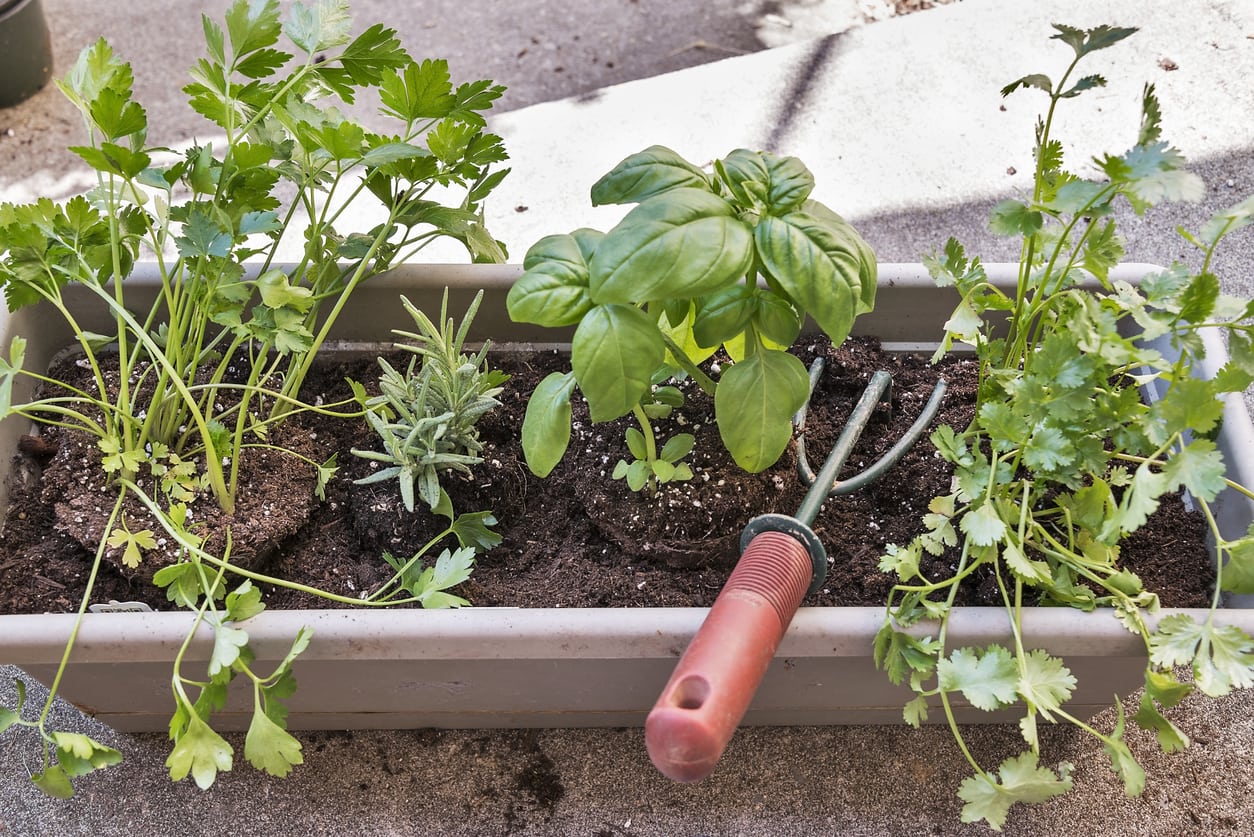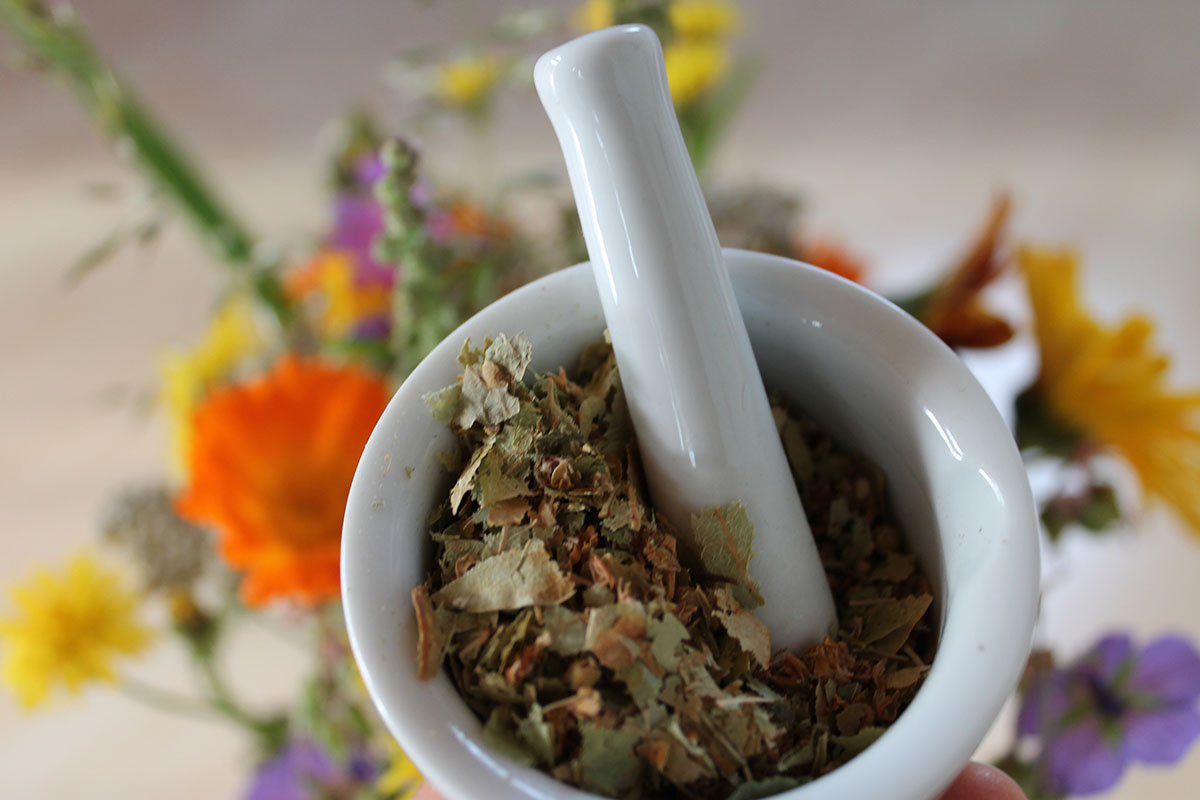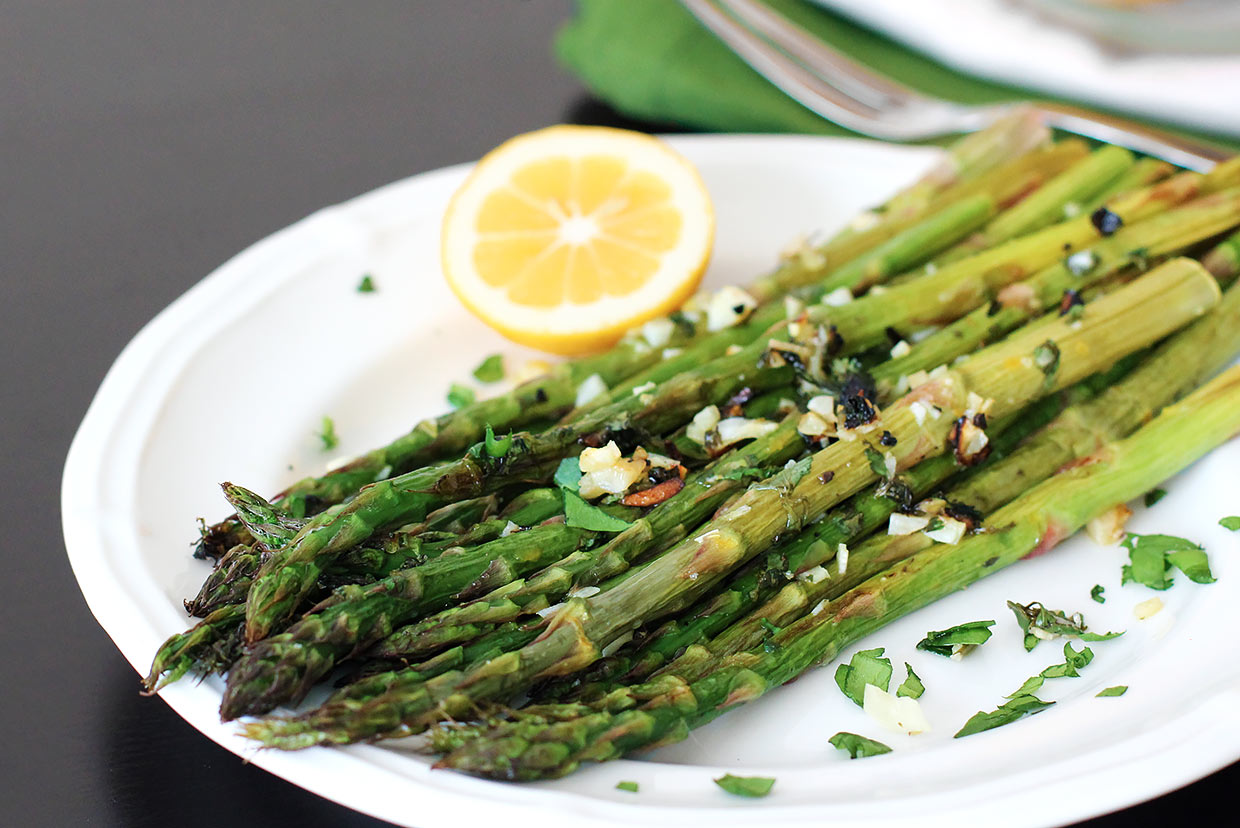Home>Gardening Basics>Getting Started>What Are Herbs


Getting Started
What Are Herbs
Modified: February 9, 2024
Discover the basics of getting started with herbs and learn how to incorporate them into your everyday life for better health and wellness.
(Many of the links in this article redirect to a specific reviewed product. Your purchase of these products through affiliate links helps to generate commission for Chicagolandgardening.com, at no extra cost. Learn more)
Table of Contents
Introduction
Welcome to the world of herbs, where nature’s bountiful treasures await to enhance our lives. Herbs have been used for centuries for various purposes, from adding flavor to dishes to treating ailments. Their vibrant colors, fragrant aromas, and medicinal properties have made them a staple in culinary and alternative medicine practices around the globe.
But what exactly are herbs? In the simplest terms, herbs are plants that are valued for their culinary, medicinal, and aromatic properties. They can be leaves, stems, flowers, or seeds of various plants and are known for their unique flavors and therapeutic effects.
The history of herbs dates back to ancient civilizations, where they were revered and used in traditional healing systems. Ancient Egyptians, for example, used herbs for embalming and religious rituals, while Chinese medicine practices incorporated herbs to promote balance and well-being.
Today, herbs are an integral part of our everyday lives. They have a multitude of culinary uses, adding depth and flavor to dishes in kitchens all over the world. From the sharpness of basil to the warmth of cinnamon, herbs can elevate the taste of any recipe.
Not only do herbs enhance our culinary experiences, but they also offer a wide range of health benefits. Many herbs contain powerful antioxidants and compounds that can help boost the immune system, reduce inflammation, and support overall well-being. Whether used in teas, tinctures, or as supplements, herbs can be a natural and holistic approach to wellness.
Throughout this article, we will explore the fascinating world of herbs in more detail, including their history, culinary and medicinal uses, popular herbs and their benefits, how to grow and harvest them, and how to incorporate them into your everyday cooking. So, let’s embark on this aromatic journey and discover the wonders of herbs.
Definition of Herbs
When it comes to understanding herbs, it’s important to have a clear definition. Herbs are classified as plants that have leaves, stems, flowers, or seeds that are used for flavoring, medicinal purposes, or both. They are typically derived from herbaceous plants, which are plants that do not produce woody stems. Unlike spices, which are derived from other parts of plants such as seeds, bark, or roots, herbs primarily come from the leaves and other above-ground parts of the plant.
One of the distinguishing characteristics of herbs is their aromatic properties. Many herbs contain essential oils that give them their distinctive scent and flavor. These essential oils are volatile and can be released when the herbs are crushed or heated, infusing the surrounding environment or food with their aromatic profile.
Herbs can be found in various forms, including fresh, dried, and in powdered or liquid extracts. Fresh herbs are commonly used in cooking to add freshness and vibrant flavors to dishes. Dried herbs, on the other hand, have a more concentrated flavor and are often used when fresh herbs are not readily available. Powdered or liquid extracts are frequently used in medicinal applications or as flavoring agents in food and beverages.
It’s worth noting that herbs are distinct from vegetables and fruits. While some herbs, such as basil and mint, are commonly used in culinary applications, they are not classified as vegetables. Similarly, while fruits like tomatoes and peppers are often used in savory dishes, they are not considered herbs.
The versatility of herbs is truly remarkable. Their flavors can range from mild and subtle to bold and robust, making them suitable for a wide variety of cuisines and dishes. From enhancing the flavors of soups and stews to elevating the taste of salads and sauces, herbs have the power to transform ordinary meals into culinary delights.
Beyond their culinary applications, herbs have long been valued for their medicinal properties. Many traditional healing systems, such as Ayurveda and Traditional Chinese Medicine, have utilized herbs for centuries to treat various ailments and promote overall well-being. Modern research has also shown the potential health benefits of herbs, with studies focusing on their antioxidant, anti-inflammatory, and antimicrobial properties.
Now that we have a clear understanding of what herbs are, let’s delve into their intriguing history and discover the fascinating ways in which they have been used throughout time.
History of Herbs
The history of herbs is as rich and diverse as the plants themselves. Since ancient times, herbs have played a vital role in human culture, from culinary practices to traditional medicine systems. The knowledge and use of herbs have been passed down through generations, shaping our understanding of their incredible properties.
Ancient civilizations across the globe recognized the power of herbs and incorporated them into their daily lives. In Ancient Egypt, herbs like garlic, coriander, and cumin were used for both culinary and medicinal purposes. They were even considered sacred and believed to have protective and healing properties.
In China, herbs were an integral part of Traditional Chinese Medicine (TCM), which dates back thousands of years. Chinese herbalists developed an extensive materia medica, a catalog of herbs and their medicinal properties, which is still in use today. Herbs such as ginseng, astragalus, and ginger were prized for their ability to promote balance and well-being.
The Greeks and Romans also recognized the value of herbs. Greek physician Hippocrates, often referred to as the father of modern medicine, emphasized the importance of using herbs as natural remedies. The Roman naturalist Pliny the Elder compiled an extensive encyclopedia of plants, documenting their uses and properties.
During Medieval times, herbal medicine continued to flourish, with monastic gardens playing a crucial role in cultivating herbs for medicinal purposes. Benedictine monks were particularly known for their knowledge of herbs, and their herbal texts became essential references for herbalists and physicians.
The Age of Exploration brought about encounters with new herbs from different corners of the world. European explorers like Christopher Columbus and Vasco da Gama discovered and brought back herbs like turmeric, black pepper, and cinnamon, which contributed to the spice trade and revolutionized culinary practices.
In more recent times, the rise of scientific advancements has allowed for deeper research into the chemical constituents and properties of herbs. This has led to the development of standardized herbal extracts, which can be found in modern herbal supplements and medicines.
Today, herbs continue to be a valuable resource for culinary enthusiasts, herbalists, and health-conscious individuals. The knowledge passed down through generations, combined with ongoing scientific research, has enriched our understanding of the wide-ranging benefits that herbs can provide.
As we explore the uses of herbs in both the culinary and medicinal realms, it’s important to appreciate the rich history that has shaped our relationship with these remarkable plants. With this historical context in mind, let’s delve deeper into the culinary uses of herbs and discover the flavors they can bring to our dishes.
Culinary Uses of Herbs
Herbs are an essential element in the world of cooking, adding depth, flavor, and vibrancy to a wide array of dishes. They have the power to transform ordinary recipes into culinary masterpieces, elevating the dining experience and tantalizing the taste buds.
One of the primary culinary uses of herbs is in flavoring dishes. Each herb has a unique flavor profile that can enhance the taste of various foods. The sharp and slightly sweet taste of basil pairs well with tomatoes, making it a staple in Italian cuisine. Rosemary, with its fragrant and pine-like flavor, is often used in roasted meats and potatoes, imparting a savory note. Meanwhile, the fresh and citrusy taste of cilantro complements Mexican and Thai dishes, adding brightness and balance.
Herbs can be used in various forms in cooking. Fresh herbs are highly valued for their intense flavors and can be added to dishes towards the end of cooking to retain their freshness. Dried herbs, on the other hand, are more concentrated and are used in recipes that require longer cooking times or when fresh herbs are not readily available. It’s important to note that the intensity of flavor may differ between fresh and dried herbs, so it’s advisable to adjust the amount accordingly.
In addition to adding flavor, herbs also contribute to the visual appeal of dishes, enhancing their overall presentation. Sprinkling a handful of finely chopped herbs over a salad or garnishing a soup with a few delicate herb leaves can elevate the aesthetic appeal and create an inviting plate.
The versatility of herbs knows no bounds. They can be used in a variety of dishes, from soups and stews to salads, sauces, marinades, and even desserts. The possibilities are endless, allowing for creativity and experimentation in the kitchen.
Combining different herbs can result in delightful flavor combinations. The classic pairing of parsley, sage, rosemary, and thyme, known as fines herbes, is commonly used to season poultry and stuffing. The Mediterranean herb blend of oregano, thyme, and basil is perfect for adding an aromatic touch to pasta sauces and pizzas. And the refreshing combination of mint and cilantro adds a burst of flavor to Middle Eastern and Southeast Asian dishes.
When using herbs in cooking, it’s important to consider the timing. Delicate herbs like basil and cilantro should be added towards the end of cooking to preserve their flavors, while heartier herbs like thyme and rosemary can withstand longer cooking times. It’s also important to remember that herbs lose some of their potency when exposed to high temperatures for long periods, so consider adding them at appropriate stages in the cooking process.
Whether you’re a seasoned chef or a home cook looking to elevate your culinary skills, incorporating herbs into your cooking repertoire is a surefire way to enhance the taste, aroma, and visual appeal of your dishes. From enriching the simplest of salads to infusing complex flavors into elaborate recipes, herbs have the power to take your cooking to new heights.
Now that we’ve explored the culinary uses of herbs, the next section will delve into their medicinal properties and the benefits they can provide for our well-being.
Medicinal Uses of Herbs
For thousands of years, herbs have been used not only for culinary purposes but also for their medicinal properties. Traditional healing systems around the world have recognized and harnessed the therapeutic benefits of herbs, utilizing them to treat various ailments and promote overall well-being.
Herbs offer a natural and holistic approach to healthcare, with many containing potent compounds that have been shown to possess antioxidant, anti-inflammatory, and antimicrobial properties. These bioactive compounds can have a positive impact on the body, supporting its natural healing processes and helping to maintain optimal health.
One of the primary medicinal uses of herbs is in boosting the immune system. Many herbs, such as echinacea, elderberry, and astragalus, are known for their immune-enhancing properties. They can help strengthen the body’s defenses, making it more resilient to infections and illnesses.
Herbs also have anti-inflammatory properties, which can help reduce inflammation in the body. Turmeric, for example, contains curcumin, a powerful compound that has been shown to have anti-inflammatory effects. Ginger is another herb known for its anti-inflammatory properties and can provide relief from conditions such as arthritis and digestive issues.
In addition to their immune-boosting and anti-inflammatory properties, herbs have been used to address various specific health concerns. For example, chamomile is often used for its calming and sleep-inducing properties, while peppermint can help soothe digestive discomfort and alleviate symptoms of irritable bowel syndrome.
Herbs can also support heart health. Garlic, for instance, has been traditionally used to promote healthy cholesterol levels and improve cardiovascular function. Hawthorn berries are another herb known for their cardiovascular benefits, supporting healthy blood pressure and heart function.
Furthermore, herbs have been utilized in promoting mental well-being and cognitive function. The adaptogenic herb ashwagandha is known for its ability to reduce stress and anxiety, while also supporting mental clarity and focus. Ginkgo biloba is believed to enhance memory and cognitive performance.
It’s important to note that while herbs can provide numerous health benefits, it’s essential to consult with a healthcare professional or herbalist before using them for medicinal purposes, especially if you have any pre-existing medical conditions or are taking medications. They can provide guidance on the appropriate dosage and potential interactions.
Using herbs for medicinal purposes can take various forms, including teas, tinctures, capsules, or topical applications. Herbal teas are a popular and accessible way to incorporate herbs into your daily routine, allowing you to enjoy their health benefits while enjoying a warm and comforting beverage.
As our understanding of herbs continues to evolve, ongoing research is shedding light on their potential therapeutic uses. Whether used as a complementary approach to conventional medicine or as preventive care, herbs offer a natural and gentle way to support our overall well-being.
Now that we’ve explored the medicinal uses of herbs, let’s delve into some of the most popular herbs and their specific benefits.
Popular Herbs and Their Benefits
There are countless herbs available, each with its own unique flavor and potential health benefits. Let’s explore some of the most popular herbs and the specific advantages they offer.
1. Basil: This herb is known for its sweet and slightly peppery flavor. Basil is rich in antioxidants and has antibacterial properties. It can support digestive health, reduce inflammation, and promote cardiovascular health.
2. Rosemary: Rosemary has a distinct pine-like aroma and a robust flavor. It is packed with antioxidants and anti-inflammatory compounds. Rosemary may improve memory and concentration, aid digestion, and have antimicrobial properties.
3. Mint: Fresh and cooling, mint is renowned for its refreshing flavor. It can aid digestion, relieve indigestion or nausea, and provide relief from headaches. Mint also has antibacterial properties and can help freshen breath.
4. Thyme: Thyme has a strong and slightly earthy flavor. It is rich in antioxidants and has antimicrobial properties. Thyme may soothe coughs and sore throats, support respiratory health, and have anti-inflammatory effects.
5. Oregano: Oregano is a staple in Mediterranean cuisine, adding a savory and aromatic touch. It has potent antioxidant properties and may have antibacterial and antifungal effects. Oregano can support digestive health and boost the immune system.
6. Parsley: Parsley has a fresh and vibrant flavor. It contains vitamins A, C, and K, as well as folate and antioxidants. Parsley may have diuretic properties, support kidney health, and provide relief from bloating and indigestion.
7. Sage: Sage has a warm and earthy flavor and a distinct aroma. It has antioxidant and anti-inflammatory properties. Sage may support cognitive function, improve mood, and alleviate menopausal symptoms.
8. Cilantro: Cilantro, also known as coriander leaves, has a bright and citrusy flavor. It is rich in antioxidants and may have antimicrobial properties. Cilantro can aid digestion, support detoxification, and promote healthy blood sugar levels.
9. Dill: Dill offers a delicate and slightly tangy flavor. It is a good source of vitamins A and C, as well as antioxidants. Dill may support digestion, alleviate gas and bloating, and have antimicrobial properties.
10. Turmeric: Turmeric has a vibrant golden color and a warm and peppery flavor. It contains curcumin, a compound with powerful anti-inflammatory and antioxidant effects. Turmeric may support joint health, boost brain function, and have potential anticancer properties.
These are just a few examples of the wide variety of herbs and their potential benefits. Incorporating these herbs into your culinary creations or using them in teas and remedies can help support your overall well-being in a natural and flavorful way.
Now that we have explored popular herbs and their benefits, let’s move on to the practical aspects of growing herbs in your own garden.
Growing Herbs in Your Garden
Growing your own herbs can be a rewarding and economical way to ensure a fresh supply of flavorful additions to your culinary creations. With a few simple steps, you can have a thriving herb garden right in your backyard or even indoors on a sunny windowsill.
1. Choose a Suitable Location: Herbs thrive in areas with plenty of sunlight, so select a spot that receives at least 6 hours of direct sunlight each day. If you don’t have outdoor space, herbs like basil, parsley, and mint can be grown indoors with sufficient sunlight or under grow lights.
2. Prepare the Soil: Herbs prefer well-draining soil, so amend your garden beds with compost or well-rotted organic matter to improve the soil structure. If you’re growing herbs in containers, choose potting soil specifically formulated for container gardening.
3. Choose Herbs to Grow: Select herbs based on your culinary preferences and the climate in your region. Some popular choices for herb gardens include basil, parsley, cilantro, thyme, rosemary, and mint. Consider the space available and the growth habit of each herb when planning your garden.
4. Planting: Dig small holes or create shallow furrows in the soil according to the planting instructions for each herb. Space the herbs adequately to allow for healthy growth. Gently loosen the root ball before planting and backfill the hole with soil, firming it gently around the base of the plant.
5. Watering: Herbs generally prefer moderately moist soil, so water them regularly to keep the soil consistently damp but not waterlogged. Use your fingers to check the moisture level of the soil and adjust watering as needed. Avoid getting water on the foliage, as this can lead to disease and fungal issues.
6. Maintenance: Herbs are generally low-maintenance plants, but regular maintenance tasks include removing any weeds that may compete with the herbs for nutrients and water. Trim back overgrown or leggy growth to promote bushier growth and harvest the herbs periodically to encourage new growth.
7. Harvesting: Harvest herbs when they are at their peak flavor and aroma. Pick the leaves or stems using clean, sharp scissors or pruners, and avoid removing more than one-third of the plant at a time. Regular harvesting encourages the herbs to produce more foliage, ensuring a continuous supply throughout the growing season.
8. Preserving Herbs: If you find yourself with an abundance of herbs, consider preserving them for future use. Air drying, freezing, or using preservation methods like making herb-infused oils or vinegars can help prolong the flavor and aroma of freshly harvested herbs.
By growing your own herbs, you have the convenience of fresh herbs at your fingertips, avoiding the need to rely on store-bought options. Additionally, cultivating your own herb garden allows you to control the use of pesticides and ensures the freshest and healthiest herbs for your culinary creations.
Now that you have learned how to grow and maintain your herb garden, let’s move on to exploring the various ways you can harvest and preserve your herbs.
Harvesting and Preserving Herbs
Harvesting herbs at the right time and preserving them properly allows you to enjoy their flavors and aromas long after the growing season has ended. Whether you have an abundant herb garden or have purchased fresh herbs from the store, knowing the right techniques for harvesting and preserving herbs will ensure you get the most out of these aromatic plants.
Harvesting Herbs:
When it comes to harvesting herbs, timing is crucial. Harvesting herbs in the morning, after the dew has dried but before the heat of the day, is ideal. This is when the essential oils in the herbs are most potent.
For leafy herbs like basil, parsley, and cilantro, pinch or snip off the leaves from the outer portion of the plant, avoiding the woody stems. This encourages the plant to continue producing new growth. When harvesting herbs with woody stems like rosemary and thyme, use sharp pruners or scissors to cut the stems just above a leaf node. This will promote branching and a bushier growth habit.
It’s important to never harvest more than one-third of the plant at a time, especially for perennial herbs, as this can weaken the plant and inhibit future growth.
Preserving Herbs:
Preserving herbs allows you to enjoy their flavors and benefits throughout the year. Here are some common methods for preserving herbs:
1. Drying: Air drying is a simple and effective way to preserve herbs. Gather a small bunch of herbs, tie them together with string, and hang them upside down in a cool, well-ventilated area. Once the herbs are completely dry and crumbly, remove the leaves from the stems and store them in airtight containers away from direct sunlight.
2. Freezing: Freezing herbs helps to retain their fresh flavors and vibrant colors. Wash and dry the herbs thoroughly, then chop or leave them whole. Place the herbs in airtight containers or freezer bags and freeze. Alternatively, you can freeze herbs in ice cube trays with a little water or oil for easy portioning.
3. Herb-infused Oils and Vinegars: Another way to preserve herbs is by infusing them into oil or vinegar. Fill a sterilized jar with fresh herbs and cover them with oil or vinegar. Seal the jar and let it sit in a cool, dark place for a few weeks to infuse the flavors. Strain the herbs and transfer the infused oil or vinegar into a clean bottle for storage.
4. Herb Butter: Blend finely chopped herbs into softened butter and roll it into a log using parchment or wax paper. Freeze the herb butter and slice off portions as needed to melt over grilled meats, vegetables, or spread onto bread.
Remember to label and date your preserved herbs to ensure freshness and keep track of their storage duration.
Whether you choose to dry, freeze, or preserve your herbs in oils, vinegars, or butter, the method you choose will depend on personal preference and the intended use of the herbs. Preserving herbs allows you to enjoy their flavors all year long and adds a delightful touch to your culinary creations.
Now that you know how to harvest and preserve herbs, let’s explore some tips and techniques for cooking with these aromatic plants.
Cooking with Herbs
Using herbs in your cooking can elevate your dishes to new heights, adding depth, flavor, and a delightful aroma. Whether you’re a seasoned chef or a beginner in the kitchen, incorporating herbs into your culinary creations can transform ordinary meals into extraordinary experiences. Here are some tips and techniques for cooking with herbs:
1. Pairing Flavors: Consider the flavors of your herbs and how they will complement the other ingredients in your dish. Savory herbs like rosemary, thyme, and sage work well with roasted meats and vegetables, while lighter herbs like basil and parsley enhance the freshness of salads and pasta dishes. Experiment with different combinations to discover your favorite flavor profiles.
2. Fresh or Dried: While fresh herbs are often preferred for their vibrant flavors, dried herbs can also be used if fresh herbs are not available. Keep in mind that dried herbs are more potent, so use them in smaller quantities. As a general rule, one teaspoon of dried herbs is equivalent to one tablespoon of fresh herbs.
3. Timing: Add delicate herbs like basil, cilantro, and parsley towards the end of the cooking process to preserve their flavors and vibrant colors. Hearty herbs like rosemary, thyme, and oregano can withstand longer cooking times and can be added during the early stages of the cooking process to infuse their flavors into the dish.
4. Chopping or Whole: Herbs can be used in various forms depending on the recipe. Finely chop herbs like parsley or basil for salads or garnishes, use whole sprigs of herbs like rosemary or thyme for roasts or stews, or even blitz them into sauces, marinades, or pestos for a burst of flavor.
5. Herb Infusions: Create herb-infused oils, vinegars, or butter by steeping herbs in warm liquids or incorporating them into softened butter. These infusions can be drizzled over salads, used in dressings, added to sauces, or spread onto bread for a delicious herbaceous kick.
6. Balancing Flavors: Don’t be afraid to experiment with different herbs to balance out flavors in your dishes. If a dish is too spicy, for example, adding a touch of fresh mint or cilantro can help cool down the heat. Use herbs like basil or dill to brighten up rich or creamy dishes, or add a pinch of thyme or rosemary to add depth to lighter dishes.
7. Garnishing: A simple garnish of fresh herbs can elevate the visual appeal of a dish, adding a pop of color and freshness. Sprinkle chopped herbs over soups, salads, or roasted vegetables right before serving for a vibrant finish.
8. Be Adventurous: Don’t be afraid to experiment with herbs and step outside your comfort zone. Try using less common herbs like tarragon, lemongrass, or marjoram to discover new and exciting flavor profiles that can take your culinary creations to the next level.
Cooking with herbs offers endless possibilities and allows you to create unique and delicious dishes. So, embrace the flavors and aromas of herbs and let your culinary creativity soar.
Now that you have learned all about cooking with herbs, it’s time to put your newfound knowledge into practice and embark on a flavorful culinary adventure.
Conclusion
Herbs hold a special place in our hearts and in our kitchens. Their flavors, aromas, and medicinal properties have been cherished and utilized for centuries, enriching our culinary experiences and supporting our well-being. From the vibrant leaves of basil to the woody stems of rosemary, each herb brings its own unique qualities to the table.
Throughout this article, we have explored the diverse world of herbs, from understanding their definition and delving into their rich history, to discovering their culinary and medicinal uses. We have highlighted some of the most popular herbs and their specific benefits, provided guidance on how to grow and harvest herbs in your own garden, and shared techniques for preserving and cooking with herbs.
By growing your own herb garden, you can have a readily available and fresh supply of herbs right at your fingertips. Whether you choose to harvest them for culinary creations or utilize their medicinal properties, herbs offer a natural and holistic approach to enhancing your life.
Cooking with herbs allows for endless creativity in the kitchen. By pairing flavors, experimenting with different combinations, and utilizing herbs to enhance the taste and presentation of your dishes, you can take your cooking to new heights. Furthermore, by understanding the medicinal benefits of herbs, you can incorporate them into your daily routines to support your overall well-being.
So, whether you’re a culinary enthusiast seeking to expand your flavor palate or someone looking for natural remedies to support your health, herbs are a versatile and accessible option that can add a delightful touch to your life. From the joy of harvesting fresh herbs to the satisfaction of cooking with them, the world of herbs invites you to embark on a flavorful and aromatic journey.
So, go ahead, awaken your taste buds, explore the wonders of herbs, and embrace the joys of culinary and natural wellness through these remarkable plants. Happy herb-growing, harvesting, and cooking!
